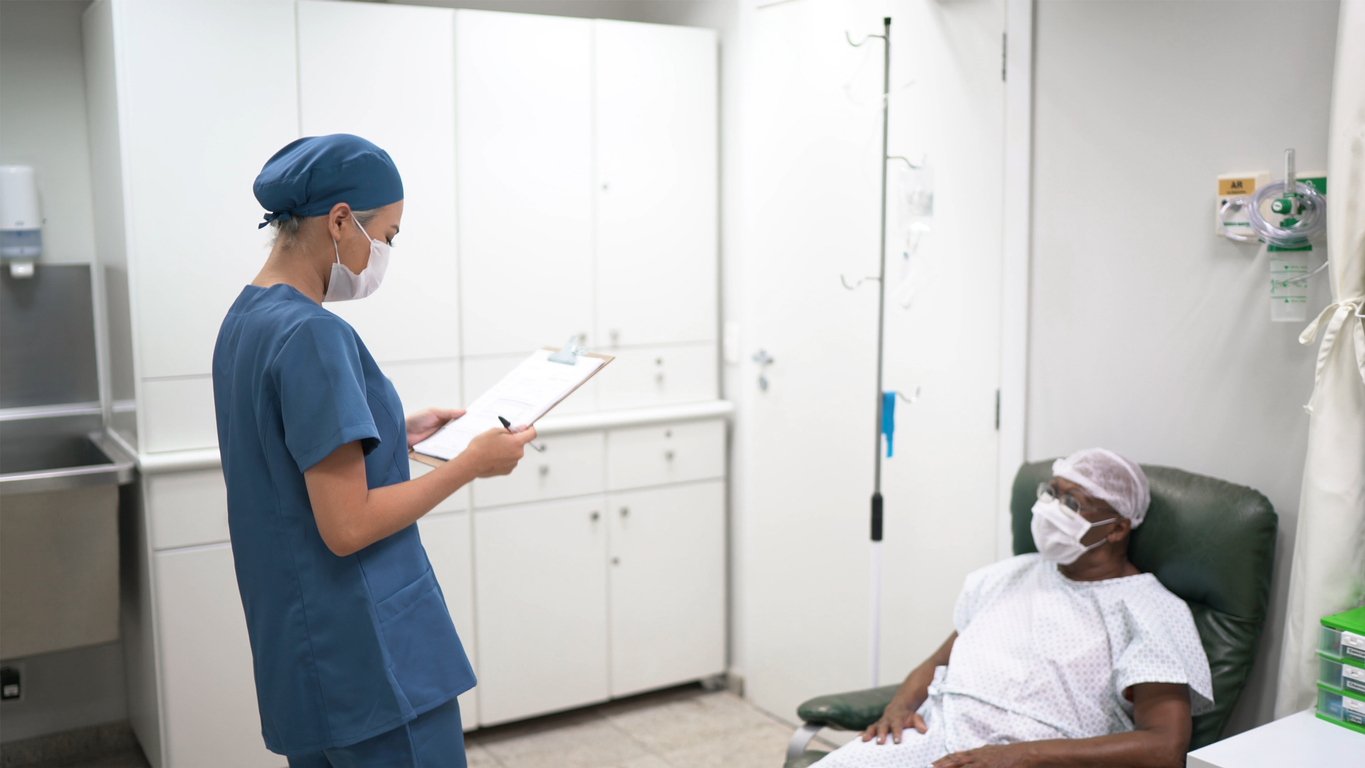<p class=”bodytextnoindentMIstyles”>The results of a Danish study presented at the European League Against Rheumatism Annual Congress (EULAR 2016) showed for the first time that a combination of text messages and individual counselling sessions to motivate patients with rheumatoid arthritis (RA) to be more active resulted in improved patient-reported clinical outcomes.
According to the findings, this type of behavioural intervention was effective at reducing daily sitting time by an average of more than two hours in RA patients, and also reduced their cholesterol levels.
Due to their disease, patients with RA tend to be more sedentary than the general population, which can have serious health consequences, including an increased risk of cardiovascular disease and premature death.
In Denmark, 67 per cent of patients with RA do not meet public health recommendations for daily moderate and vigorous physical activity, and similar proportions of physically inactive RA patients are found in Germany (68 per cent) and the UK (67 per cent).
Patients with RA already have an increased risk of cardiovascular disease and premature death, partly caused by the chronic inflammatory rheumatic disease itself, and partly by traditional risk factors, such as hyperlipidaemia.
Although exercise is known to have a positive effect on pain and physical functioning in patients with RA, pain often acts as a barrier against maintenance of a physically active lifestyle. A more feasible approach for improving health and wellbeing in RA patients would therefore be to focus on reducing sedentary behaviour and increasing light intensity activity, rather than solely concentrating on increasing moderate and vigorous physical activity, the study noted.
“We know that behavioural approaches are effective in reducing sedentary behaviour in healthy populations,” said Ms Tanja Thomsen of the Copenhagen Centre for Arthritis Research, Centre for Rheumatology and Spine Diseases, Rigshospitalet, Denmark.
“Our findings support the introduction of behavioural approaches as an effective way to improve the health of rheumatoid arthritis patients, which may also be applicable in other populations with chronic disease and limited mobility.”
A total of 75 adult RA patients with a self-reported daily sitting time greater than five hours and Health Assessment Questionnaire score less than 2.5 underwent a 16-week, individually-tailored, behavioural intervention that included three individual motivational counselling sessions with a health professional and regular text messages aimed at improving motivation to reduce daily sitting time and replacing it with light-intensity physical activity.
A control group of 75 healthy adult patients matched for other characteristics was encouraged to maintain their usual lifestyle.
Daily sitting time was recorded using a wearable activity monitor.
After 16 weeks, there was a significant between-group difference in average daily sitting time in favour of the intervention group of 2.20 hours per day.
<h3 class=”HeadC18MIstyles”>New comorbidity tool predicts risk of hospitalisation and premature death in patients with psoriatic arthritis</h3> <p class=”bodytextnoindentMIstyles”>A newly-developed method of evaluating the impact of different comorbidities in patients with psoriatic arthritis (PsA) can be used to prospectively identify those PsA patients at greater risk of hospitalisation and premature death.
The tool was revealed at EULAR 2016.
In addition to helping predict the future use of resources and identify targets to reduce costs, application of this new PsA-comorbidity index may ultimately improve outcomes for PsA patients.
“To date, no disease-specific models had been developed to identify those comorbidities with the greatest impact on PsA patients’ health status,” said Dr Yasser El Miedany of the Department of Rheumatology, Darent Valley Hospital, UK.
“We have now developed and validated a PsAco-morbidity index (PsACI), which will enable clinicians to prospectively include comorbidities assessment and management in their standard practice.
“Once our research has been published, we suggest this new tool is included as part of the patient-reported outcome measures used in standard clinical practice. By making PsACI available to rheumatologists worldwide, we hope it will prove an effective guide to optimising the management of PsA.”
Due to dual skin and joint involvement, patients with PsA experience further impairment and consequently a lower quality of life compared with patients with psoriasis alone. In addition, the burden of physical comorbidities, which increases the severity of psoriasis and with the presence of severe PsA, increases mortality.
A retrospective, multicentre analysis of 1,707 PsA patients, monitored over a 10-year period, assessed the impact of different co-morbidities on predicting future death and hospitalisation. To develop a morbidity index score, different cut-off values were identified to delineate patients at different stages of risk of hospitalisation and death.
<h3 class=”HeadC18MIstyles”>Osteoarthritis viewed as not as severe as rheumatoid arthritis</h3> <p class=”bodytextnoindentMIstyles”>The results of a study presented at EULAR 2016 showed patients with osteoarthritis (OA) are more likely to have the impact of their condition underestimated by rheumatologists than patients with RA.
Previous studies have shown that doctors and their patients with various rheumatic conditions, including RA, tend to rate the impact of the disease very differently.
Although recent evidence suggests similar disease burdens in both OA and RA, OA is still generally regarded as being less severe than RA.
In this new study, from the US, patient perception of disease severity was greater than physician assessment (by two units or more) in one third of 243 OA patients and one-fifth of 216 RA patients. The assessments of severity were equivalent in just over one half of OA and two-thirds of RA patients. Physician evaluation of severity was greater than patient assessment (by two units or more) in 10 per cent of OA and 15 per cent of RA patients.
Physician and patient evaluation of disease severity are both based on a 0-10 visual analogue scale; patient assessment included completion of a multidimensional health assessment questionnaire, with scores for physical function, pain and fatigue, a symptom checklist and a self-reported joint count.
“This discordance between physician and patient perception of disease severity is important because of the negative impact it can have on shared decisions concerning the best choice of therapy,” said lead author Dr Isabel Castrejón from the Rush University Medical Centre, Chicago, US.
“This in turn is likely to interfere with treatment compliance and future outcomes.”
<h3 class=”HeadC18MIstyles”>Biosimilar switching not suitable for all patients</h3> <p class=”bodytextnoindentMIstyles”>Patients with antibodies to biological infliximab are less likely to benefit from infliximab biosimilar (CT-P13), according to a study presented at EULAR 2016.
The study showed that when antibodies develop in response to the biological treatment infliximab, they also cross-react with the biosimilar of infliximab.
These findings suggest that antibody-positive patients being treated with infliximab should not be switched to treatment with the biosimilar, since these antibodies will interact with the new drug and potentially lead to a loss of response.
Although biologics have revolutionised the treatment of many rheumatic diseases, some patients generate an immune response to such drugs, with the resultant antibodies potentially limiting their clinical efficacy and safety.
“While most studies show there are no significant differences in clinical response between a biosimilar and the original product, some physicians and patient advocacy groups have expressed concern about how interchangeable they really are, and whether it is safe to switch from the brand-name version to the biosimilar,” said lead author Dr Daniel Nagore of Progenika Biopharma, Derio, Spain.
“Our results have shown that all the antibodies that developed in patients being treated with Remicade [infliximab] cross-reacted with the biosimilar. The presence of these anti-infliximab antibodies is likely to enhance clearance of the drug from the body, potentially leading to a loss of response, as well as increasing the risk of side-effects. Therefore, in patients where biological infliximab is ineffective due to the presence of circulating antibodies, switching to its biosimilar will lead to the same problems.”
The study included 250 rheumatoid arthritis and spondyloarthritis patients undergoing Remicade treatment who had never been previously treated with the biosimilar, and 77 control patients.
Using assays to assess concentrations of anti-infliximab antibodies, half (50.4 per cent) of the infliximab-treated patients tested positive for anti-infliximab antibodies, and 100 per cent of those who tested positive for anti-infliximab antibodies also exhibited antibody reactivity against the biosimilar.
These results are aligned with previous infliximab antibody data among patients with inflammatory bowel diseases being treated with infliximab.
Further studies are now planned with biosimilar-treated patients to better assess the potentially different immune responses associated with biologics.
<h3 class=”HeadC18MIstyles”>Heart monitor implant could save lives in patients with serious immune-mediated rheumatic disease</h3> <p class=”bodytextnoindentMIstyles”>A study presented at EULAR 2016 has shown that use of a heart monitor in patients with systemic sclerosis (SSc) and no known heart disease enables early detection and treatment of potentially fatal cardiac arrhythmias.
The findings support the need to identify SSc patients at risk of heart problems that would benefit from this implanted recorder.
SSc is an autoimmune rheumatic disease affecting multiple organs, including the heart. Damage to the heart as a direct consequence of SSc may involve the conduction system that controls the heartbeat, the heart muscle, heart valves and/or the external lining of the heart.
Cardiac involvement is thought to be common in patients with SSc, although there are often no symptoms or signs.
“We know that cardiac involvement in SSc is associated with a very poor prognosis, accounting for between 14 and 55 per cent of deaths among patients with SSc,” said Dr Lesley-Anne Bissell of the Musculoskeletal Biomedical Research Unit, University of Leeds, UK.
“Early diagnosis and treatment to reduce the risk of complications is therefore essential and crucial for a positive outcome,” she added. This heart monitor (also known as an implantable loop recorder) is a subcutaneous, single-lead, electrocardiographic (ECG) monitoring device used to diagnose heart rhythm abnormalities. It is capable of storing ECG data automatically in response to any significant change in heart rhythm, or in response to patient activation when symptoms are experienced. Its use is well established in cardiology practice.
“The device, about the size of a pack of chewing gum, is typically inserted through a small cut to lie under the skin in the upper-left chest. Electrodes that monitor the heart’s electrical activity are on the surface of the device, so there are no wires, and the device is enclosed in a protective case.
“The procedure is performed under local anaesthetic and takes 15-20 minutes.”
In this pilot study, the heart monitor picked up a variety of heart rhythm abnormalities in more than half of the cohort of 19 SSc patients, including supraventricular ectopics, ventricular ectopics, ventricular tachycardia and complete heart block. Cardiac MRI data available for 15 of these SSc patients showed markers of cardiac damage that significantly correlated with these heart rhythm abnormalities.
<h3 class=”HeadC20MIstyles”>Genetic clue to the development of mouth ulcers in lupus</h3> <p class=”bodytextnoindentMIstyles”>An association has been shown between a specific genetic pathway and the development of mouth ulcers in patients with systemic lupus erythematosus (SLE), according to a study presented at EULAR 2016.
The authors state that establishing a link between the vascular endothelial growth factor (VEGF) genetic pathway with a specific disease characteristic among SLE patients represents an important step towards unravelling the genetic basis of different SLE clinical presentations.
SLE is a genetically complex chronic relapsing autoimmune disease characterised by inflammation that may affect different tissues, including the skin, joint linings, lungs, kidneys and other organs. The disease is highly variable in the way it may present, and also in its outcome among individuals and across different ancestral groups.
It often progresses to organ dysfunction and failure.
“Understanding the relationships between specific SLE risk genes and different manifestations of the disease should help elucidate the underlying disease mechanisms and pathways,” said Dr Antonio Julià of the Vall d’Hebron Research Institute, Barcelona, Spain.
“Understanding more about the genetic pathways which underlie different manifestations of SLE is an important step towards the goal of improving the management of SLE, and ultimately to offer preventative care to individuals at increased risk of SLE,” he added.
To identify new genetic variations associated with different SLE phenotypes, a total of 598,258 different regions on the genome (known as single-nucleotide polymorphisms) were genotyped in a population of 482 Caucasian European SLE patients of Spanish origin, recruited from the rheumatology departments of 15 Spanish university hospitals belonging to the IMID Consortium (SLE group).
A total of 11 clinically-relevant SLE phenotypes were tested for association with over 700 reference genetic pathways. In this discovery stage, two genetic pathways were significantly associated with the presence of mouth ulcers and the presence of antinuclear antibodies in SLE.
These two genetic pathways were then tested for validation in a second independent population of 425 SLE patients of the same southern European ancestry recruited from the same Spanish hospitals. In this replication stage, the significant association between mouth ulcers and the VEGF genetic pathway was confirmed.
“Finally, analysing the transcriptional effect of the topical immunotherapies used for the treatment of mouth ulcers in SLE, we found a significant differential expression of VEGF pathway genes,” Dr Julià concluded.
<h3 class=”HeadC20MIstyles”>Air pollution may worsen lupus in children — new research</h3> <p class=”bodytextnoindentMIstyles”>New research presented at EULAR 2016 shows that an individual’s exposure to air pollution may have a direct role in triggering disease activity as well as airway inflammation in children and adolescents with SLE.
The study, which was conducted in Brazil, has confirmed a direct link between an individual’s personal exposure to fine pollution particles and their lupus disease activity.
Previous studies have shown that exposure of a population to outdoor pollutants was associated with an increase in hospital admissions due to paediatric rheumatic diseases, as well as a higher risk of disease activity in those patients attending a hospital with childhood-onset SLE.
Air pollution is a major health issue in Brazil, killing around 49,000 Brazilians every year as a result of its direct link to respiratory and cardiovascular disease, and cancer.
Deaths from both outdoor and indoor air pollution represent one in every 26 deaths from all causes in Brazil, making it the ninth-largest mortality risk in Brazil.
The World Health Organisation (WHO) has estimated that one-in-eight of total deaths globally are the result of air pollution exposure, confirming air pollution as the world’s largest single environmental health risk.
Air pollution is estimated to cause nearly half a million premature deaths each year in the European Union. In busy cities, where air quality is usually at its worst, the average life expectancy of people is reduced by over two years.
“Our findings have shown that air pollution doesn’t just increase the incidence and prevalence of chronic lung disease and acute respiratory infections, lung cancer, heart disease and strokes, it is also an important contributory factor in childhood rheumatic diseases, such as lupus,” said Dr Maria Fernanda Goulart from the Department of Paediatric Rheumatology, University of São Paulo, Brazil.
“With air pollution increasing in many major cities, paediatric rheumatologists can expect to see a resultant impact on the disease activity of their lupus patients.”











